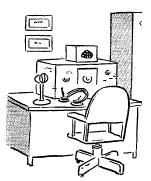 Over winter break I have been putting in a lot of time behind the radio. Here’s the wrap up:
Over winter break I have been putting in a lot of time behind the radio. Here’s the wrap up:
First – more DX. In general, this is a good time of year to catch hams behind their rigs. Some contacts that I am particularly proud of:
4U1WB, The World Bank in Washington D.C.
ZD7DL, St Helena Island
WH6S, Kauai
C5YK, The Gambia
9H5BZ, Malta
MI5AFK, Northern Ireland
FG5GP, the island of Guadeloupe
ZS6TVB, South Africa
EA8DAZ, Canary Islands
VP2ETE, Anguilla
Second – working a lot of DX. There is the 90th anniversary of the International Amateur Radio Union (IARU) special event activations. Plenty of good DX participating in this and working multiple bands.
Cuba
Bermuda
Finland
Germany
Aruba
Venezuela
Jamaica
Ireland
Italy
Slovenia
Brazil
Third – working Santa (aka AA4EE) on Christmas Eve. The girls really enjoyed telling Santa what they wanted. Thank you Santa!
Four – joining the OMISS and the 3905 Century Club nets. I am not sure if I fully understand these nets. I get the convenience in pursuing Worked All States awards. That makes sense. However each club also has an additional bevy of other types of awards. The actual contacts during the nets seem a bit unfulfilling. But I may not yet fully understand these nets. I need to thoroughly read all the literature.
Five – Log of the World: I have uploaded the vast majority of my logs. I mentioned before about uploading my YI9MI logs. I also went back and uploaded my log from KD7PJQ back in Virginia. The logs from Korea (HL2/AD7MI and HL9MI) are now uploaded. All my logs using AD7MI have been uploaded.















 Last week was busy – I spent the whole time down in Seoul attending meeting after meeting with my evenings spent on a bunk bed in a communal room (trying to save a little cash for Uncle Sam). The week was productive, but tiring. The main US military garrison in Seoul,
Last week was busy – I spent the whole time down in Seoul attending meeting after meeting with my evenings spent on a bunk bed in a communal room (trying to save a little cash for Uncle Sam). The week was productive, but tiring. The main US military garrison in Seoul,  However, by Saturday morning I was still tired and unmotivated to put up my Buddipole… despite the lure of the 10M contest. I did have a QSO with my dad via EchoLink. He used an app on his Android cell phone and connected through my EchoIRLP node (EchoLink Node #496698 and IRLP Node #3370). My friend brought by some freshly made
However, by Saturday morning I was still tired and unmotivated to put up my Buddipole… despite the lure of the 10M contest. I did have a QSO with my dad via EchoLink. He used an app on his Android cell phone and connected through my EchoIRLP node (EchoLink Node #496698 and IRLP Node #3370). My friend brought by some freshly made 
